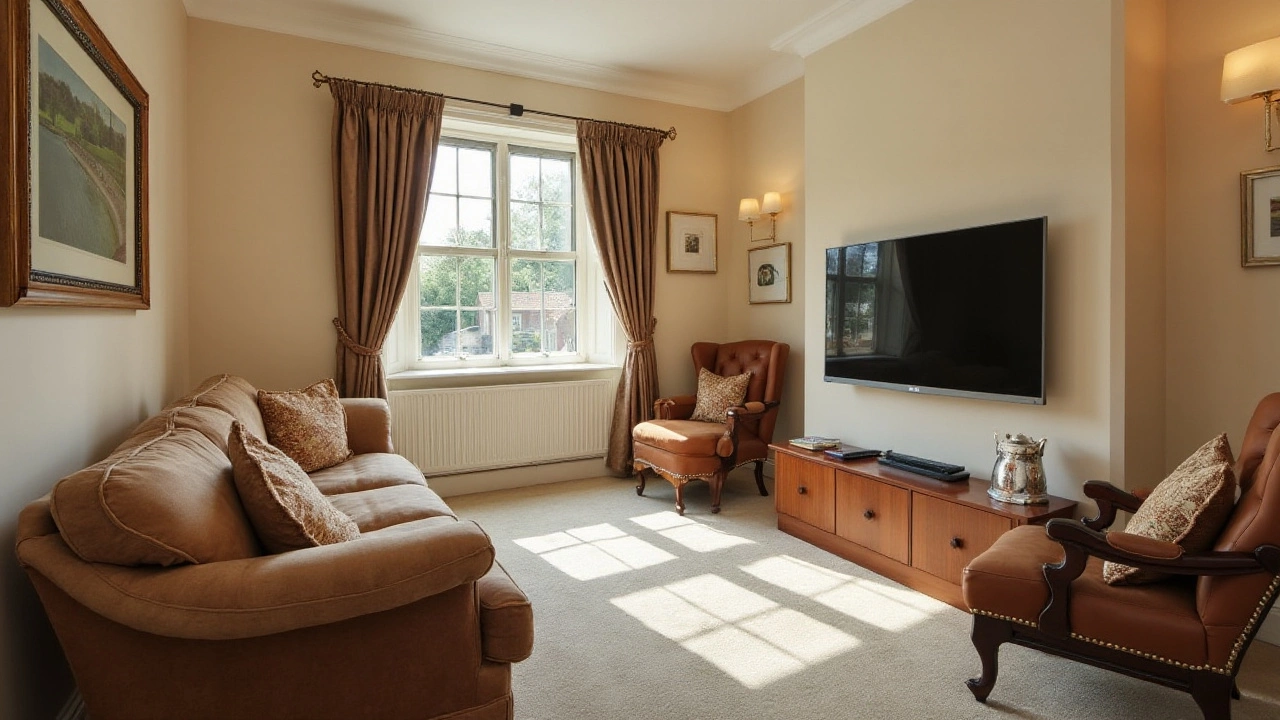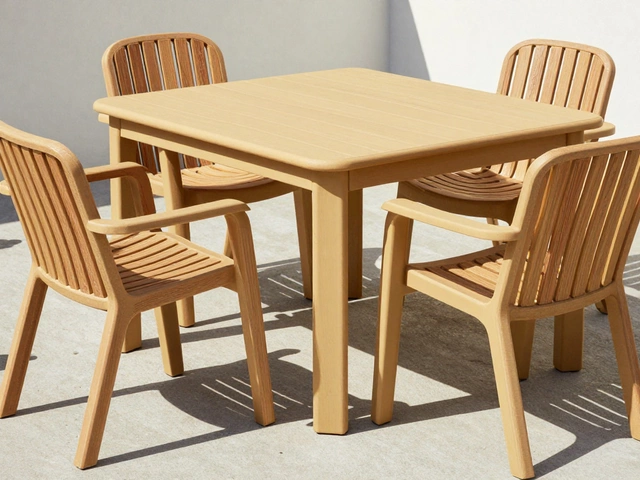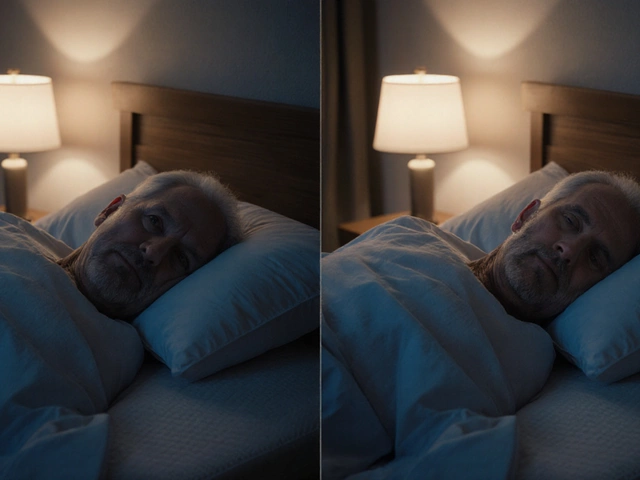Setting up your living room to be both stylish and functionally pleasant requires more than just picking the right furniture. One of the most common questions people face is: how far should your sofa be from your TV? It's a bit of an art, mixing the science of angles and distances with personal comfort preferences.
The right balance can transform your space into the perfect spot for relaxation and entertainment. While there's no one-size-fits-all answer, there are practical guidelines and tips to help you find that sweet spot, where your living room setup feels both inviting and visually appealing.
- Screen Size and Viewing Distance
- Room Layout Considerations
- Creating a Focal Point
- Balancing Style and Comfort
Screen Size and Viewing Distance
The question of how to appropriately distance your living room sofa from the TV is deeply intertwined with the size of the screen. While it might seem a minor detail, the distance can significantly enhance or detract from your overall viewing experience. Experts typically recommend the 1.5-to-2.5 times rule—meaning you should place your seating at a distance of 1.5 to 2.5 times the diagonal measurement of your TV from the screen. This rule is not just a suggestion but a guideline designed to ensure comfort, reducing eye strain while optimizing visual clarity and immersion.
Consider a scenario where you have a 55-inch TV. Applying the 1.5-to-2.5 formula, your sofa should ideally be positioned between approximately 6.9 and 11.4 feet from the TV. However, the practical application might vary based on your personal preferences, the resolution of the TV, and your space's specific layout dynamics. With advancements in television technology, high-definition and 4K TVs allow closer seating without compromising the picture quality, enabling rooms to maintain a compact feel without forfeiting quality.
TV viewing has evolved with the advent of UHD and 4K displays, where traditional rules about sofa distance offer more flexibility. As quoted by interior designer Briana Hill, "The evolution of TV technology allows us to reconfigure our spaces not around constraints but desires." Such advances mean that even if you crave a more intimate viewing experience, you can position your sofa slightly closer than older models would allow, tapping into the peculiar pleasure of spotting fine details in the latest nature documentary or action movie.
Yet, one must also manage to strike a perfect balance between too close and too distant—a decision ill-managed could either lead to missing out on engaging details or, conversely, feeling overwhelmed by an overly large image at a short distance. Remember that however captivating your TV screen might be, it should never overpower the other elements within the living room. A well-curated setup, with the TV and its distance managed smartly, ensures a harmonious and comfortable feel, allowing you to fully enjoy both your décor and media experiences without sacrificing one for the other.
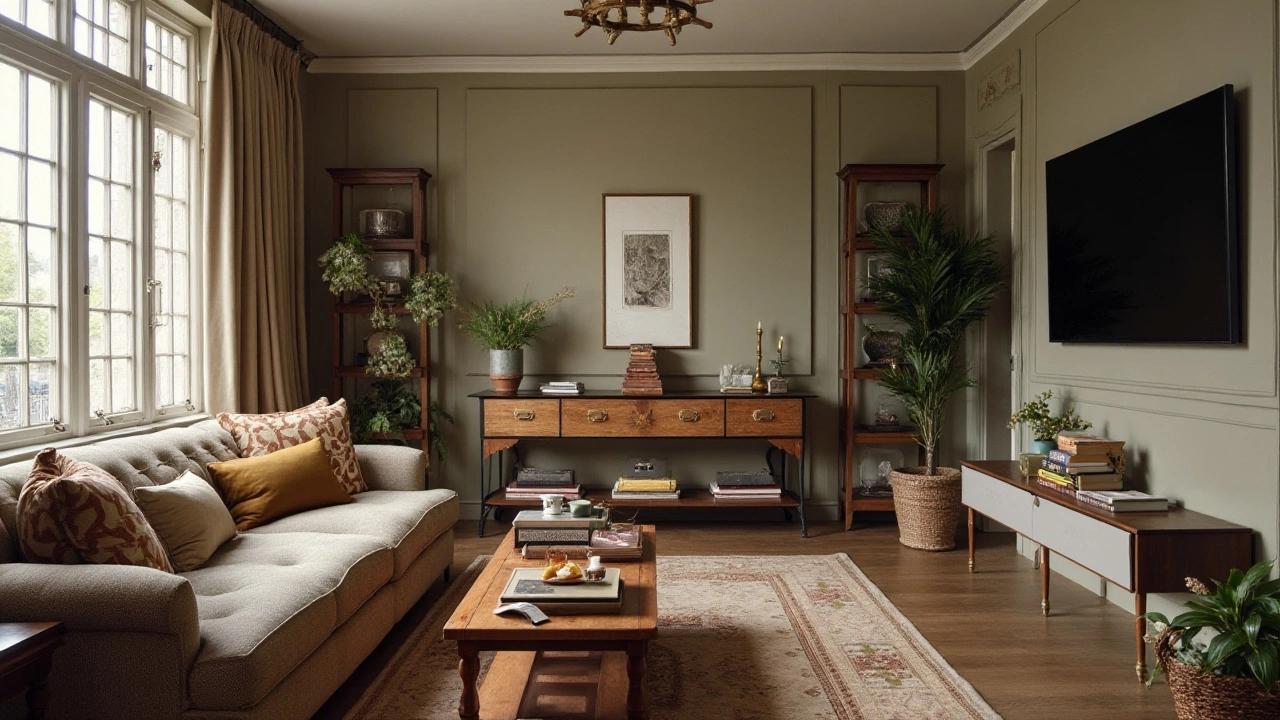
Room Layout Considerations
Designing a living room to maximize your TV viewing comfort often starts with understanding the dimensions and unique characteristics of your space. Picture your living room as an artist's canvas; the way you arrange your furniture can either accentuate or diminish its overall aesthetic appeal. Key focal points, such as windows and fireplaces, play a crucial role in dictating where to position both your sofa and TV. If the TV is directly opposite a window, consider using curtains or blinds to minimize glare, which invariably leads to a strained viewing experience. The physical shape of your room—be it rectangular, square, or with odd angles—influences not only where the TV should sit but where accompanying furniture like coffee tables should be placed for optimal efficiency and style.
When laying out your living room, it's important to consider traffic flow to avoid creating a maze where movement becomes an obstacle course. Keep pathways clear to maintain functionality. Ideally, there should be at least 3 to 4 feet of walking space around the sofa to ensure free movement, especially in households with children or pets, like my mischievous cat Whiskers who often leaps around unpredictably. Another smart tactic is using a corner of the room, as this can often create a cozy nook that makes the room feel more expansive.
"Managing space is not about what you remove; it's about what you prioritize," says Joanna Gaines, designer and television host. “The goal is to make people feel both inspired and comfortable in their own surroundings."
Lighting can make or break your viewing experience. During the day, naturally lit rooms are a joy, but as the sun sets, strategically placed lamps can prevent the room from becoming a shadowy realm. Consider installing dimmable lights around the TV to alleviate the dark reflections on the screen, which could detract from your binge-watching sessions. Placing a lamp or two behind the TV often enhances the picture quality while also contributing to the room's ambiance, enhancing your evening rituals.
Sometimes, the right room layout involves a touch of creativity, like wall mounts, which free up floor space, giving your room a contemporary flourish. Incorporating bold pieces of art above the TV or adding a uniquely shaped coffee table can lend personality, striking the perfect balance between aesthetics and function. It's not always about the need for a minimalist design—sometimes, blending textures and materials, like a plush rug under your coffee table and soft throws on your sofa, can invoke a warm, inviting atmosphere that your friends and family will love to gather in.
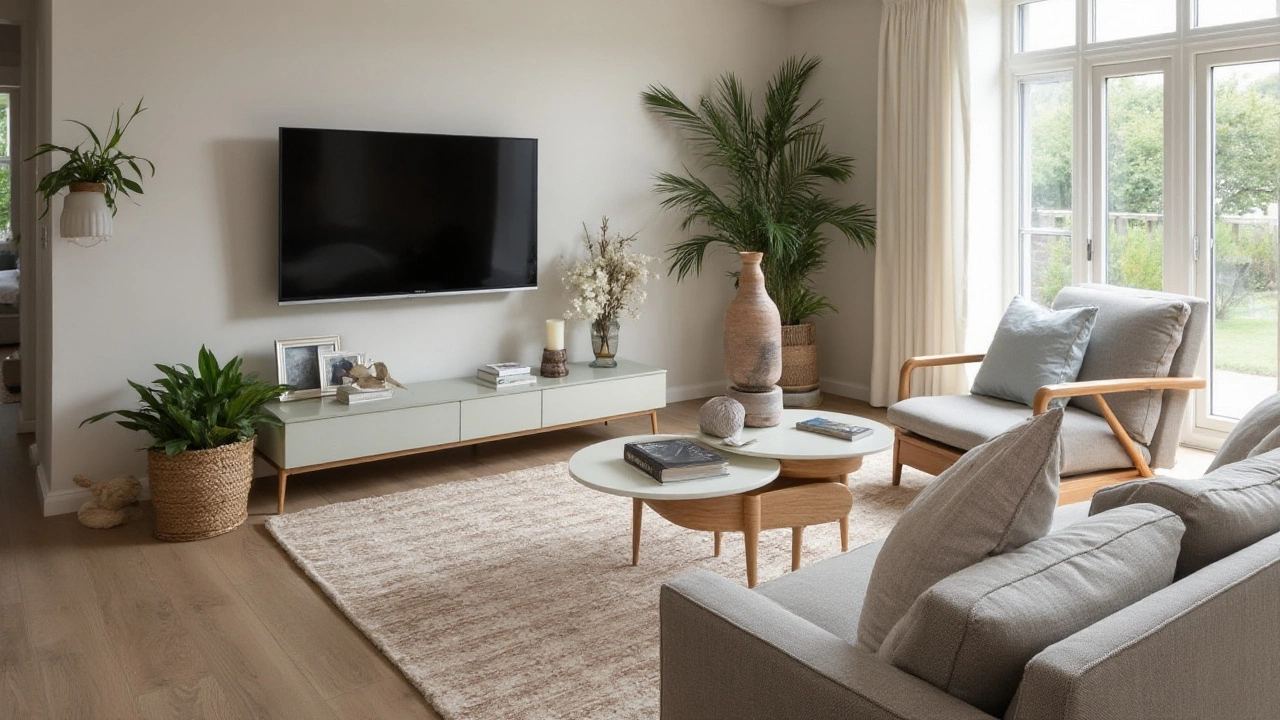
Creating a Focal Point
At the heart of a stylish living room lies the concept of the focal point — a feature that draws the eye and sets the tone of the space. The TV often plays this role, especially in rooms where entertainment is paramount. To achieve harmony in your living room, it's crucial to position your furniture and decor in a way that naturally guides attention to the television, the centerpiece of your entertainment system.
A well-placed sofa distance from the TV not only enhances TV viewing but also establishes equilibrium with the rest of the room. Begin by considering the lines of sight. You want to make sure there is a clear, unobstructed view from the seating area to the TV. This means avoiding furniture placement that breaks this visual line. Perhaps you may wish to use the rule of thirds, a principle borrowed from photography, where you position the TV to the right or left side of the center, creating a dynamic and harmonious look.
Integrating your TV's surroundings with thoughtful design elements can enrich this focal point's appeal. Consider adding a media console or a sophisticated wall unit that complements the screen. This adds textural depth and practical storage solutions, vital for maintaining an organized environment. Choose a console that matches your room's style, be it modern, rustic, or eclectic. This ensures that the TV area aligns with the overall aesthetic of your decor.
Lighting also plays an important role in highlighting the TV area without causing bothersome glare. Opt for indirect lighting, such as floor lamps or recessed fixtures, which can soften the atmosphere and provide an inviting ambiance. Implementing dimmable options will give you versatility, allowing you to customize the light intensity for different activities, whether it's a movie night or casual lounging.
“Your home should tell the story of who you are, and be a collection of what you love.” – Nate Berkus
Consider the color palette as well. Neutral colors are often favored around the TV, ensuring that it integrates smoothly into the room without overpowering it. However, don't shy away from bold accents that reflect your personality and add character. A cohesive color scheme around the TV not only accentuates it visually but also creates an immersive viewing experience.
Lastly, add personal touches. Incorporate shelves with books, plants, or art that brings a sense of who you are into the space. These elements, although not directly related to the TV, help in creating a balanced composition around it, converting the TV area from a mere functional spot to a truly inviting and personalized focal point.
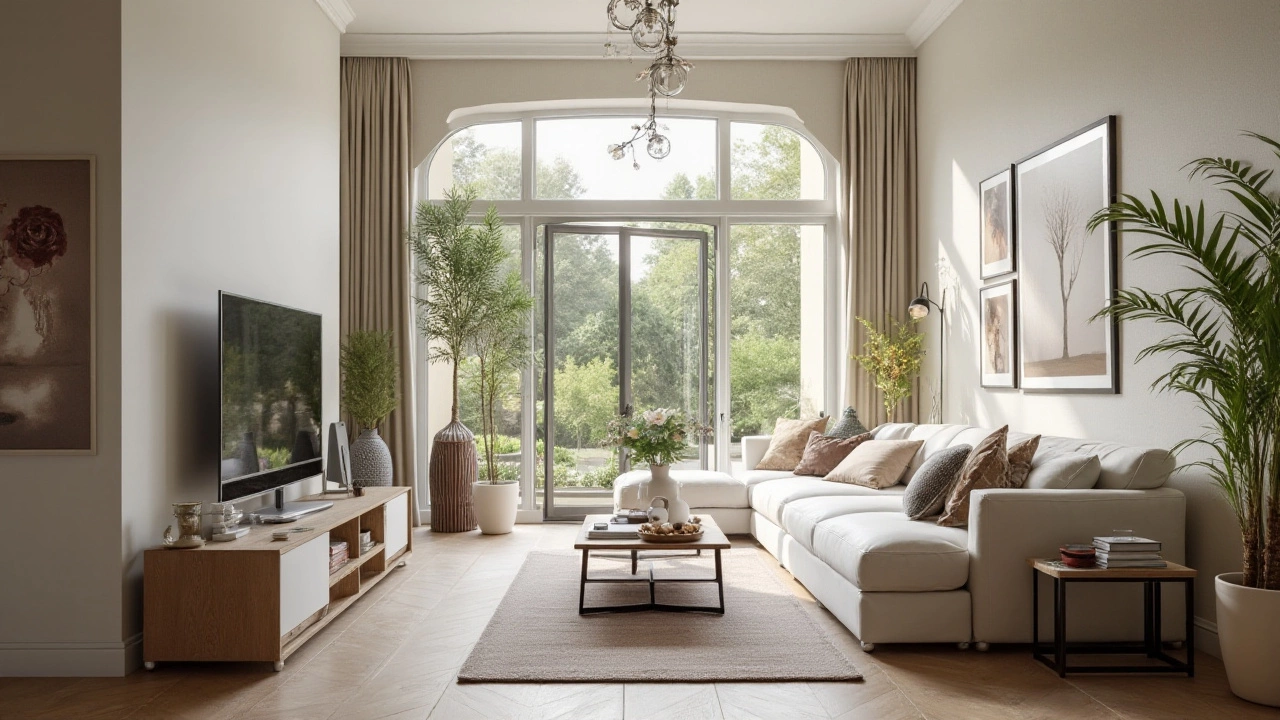
Balancing Style and Comfort
Creating a living room that exudes both style and comfort might seem challenging, but it's all about finding the right harmony between aesthetics and practicality. Your sofa and TV setup plays an integral role in achieving this balance, acting as the central elements of your room. The placement of these pieces, as well as additional furniture like coffee tables, can subtly influence your space's appeal without sacrificing functionality. It's essential to ensure your seating position allows for comfortable viewing, while still offering an invitation to sink into relaxation after a long day.
One essential aspect of balancing style and comfort is ensuring that your living room setup reflects your personality while adhering to key design principles. For instance, the distance between your sofa and TV should not only cater to visual comfort but should also be conducive to conversation and movement. Ideally, a sofa is placed at a distance that strikes a chord between practicality and elegance, offering a clear view without encouraging awkward neck craning or squinting. This involves examining the angle from which you view the TV, ensuring that it's around the same height as your eyes when seated.
When considering comfort, it's also crucial to acknowledge the impact of lighting and decor. A well-lit room can transform the viewing experience. If your room suffers from glare issues, considering the placement of curtains, blinds, or dimmable lighting could be beneficial. Additionally, think about how accessories such as rugs and pillows contribute to the inviting nature of the room. They can add warmth and provide the tactile comfort necessary for an evening spent lounging on your sofa. In this balance, sometimes it's the small details that add up to create an environment where style and comfort coexist effortlessly.
Exploring Furniture Arrangement
The thoughtful arrangement of furniture is key to achieving a perfect blend of style with comfort. Begin by considering the layout of your room and how traffic might flow through it. Access to and exits from your sofa should be unhindered. Introducing coffee tables or side tables can bridge the gap between style and function. They not only enhance the look but also offer a convenient place to rest drinks and remotes. However, their placement should be within easy reach without cluttering the space.
More people are gravitating towards multifunctional furniture pieces that allow for style variety while maintaining comfort. Whether it's an ottoman that doubles as a coffee table, or a sectional sofa that can be rearranged, these additions can offer plentiful opportunities to customize your space according to your needs. These adjustments not only maintain the approachability of the area but also apply to personal comfort preferences, allowing for change depending on the occasion.
"The joy of design is the freedom to blend different elements, in a way that elevates the spirit and still maintains the comforts of function." - Ada Louise Huxtable
Ultimately, the key is understanding the dynamic between style preferences and practical needs. While a sofa may set the room's tone, it's the careful consideration of how items interact that truly defines a space's comfort. It’s about choosing fabrics that invite families to relax, colors that express personal taste, and achieving the ideal seating arrangement to enjoy your TV setup responsibly. With a little attention to detail, you can create a living room that is as cozy as it is chic, reflecting your own distinct style in every detail.
